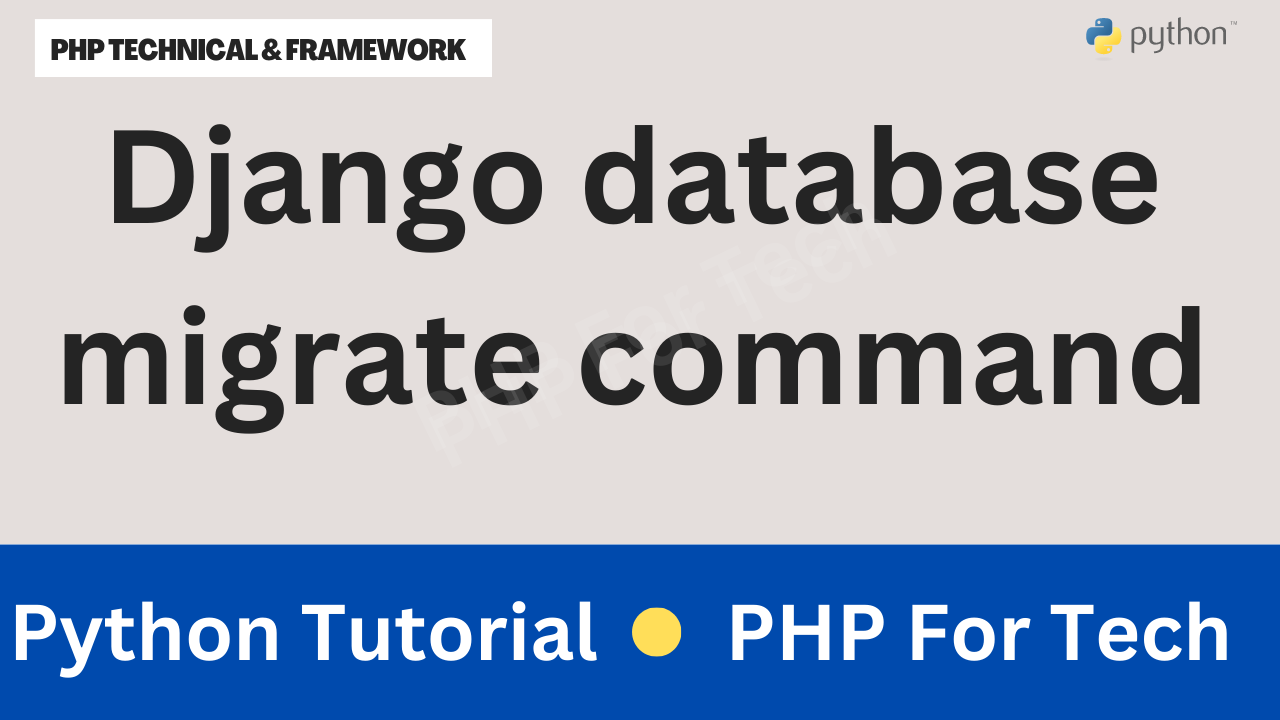Django database migrate command
Django database migrate command– In the world of web development, managing databases efficiently is crucial to ensure the smooth operation of applications. Django, a popular Python web framework, provides a powerful tool called “migrations” to handle database schema changes seamlessly. In this comprehensive guide, we’ll delve into the intricacies of the Django database migration process, focusing on the essential migrate command. By the end of this article, you’ll have a solid understanding of how migrations work and how to wield the migrate command effectively.
Django database migrate command
Understanding Django Migrations
Django migrations serve as a mechanism to track and manage changes to your application’s database schema over time. This ensures that your database structure evolves in sync with your codebase. The process involves generating Python code that describes the changes to be made to the database, and then applying these changes using the migrate command.
The Anatomy of the Migrate Command
The migrate command is a cornerstone of Django’s migration system. It applies any outstanding database changes recorded in your project’s migration files. To utilize this command effectively, follow these steps:
- Creating Initial Migrations
Before running the migrate command, you need to create the initial migrations for your app. This involves generating a migration file that captures the current state of your models and their relationships. You can achieve this using the makemigrations command:
python manage.py makemigrations your_app_name
2. Applying Migrations
Once the initial migration is generated, it’s time to apply it using the migrate command:
python manage.py migrate your_app_name
- Handling Database Schema Changes
As your application evolves, you’ll likely need to make changes to your models. Django’s migration system provides commands to create new migrations when you modify your models. These commands automatically generate migration files that describe the changes:
Adding a new field: python manage.py makemigrations your_app_name –name your_migration_name
Altering a field: python manage.py makemigrations your_app_name –name your_migration_name
Deleting a field: python manage.py makemigrations your_app_name –name your_migration_name
- Applying Multiple Migrations
Django’s migration system maintains a record of previously applied migrations. To apply multiple migrations at once, use the migrate command without specifying a migration name:
python manage.py migrate your_app_name
Advanced Migration Concepts
Beyond the basics, Django migrations offer advanced features and concepts to enhance your database management:
Data Migrations: Learn how to write data migrations to handle data changes alongside schema changes.
Dependencies and Order: Understand how migration dependencies are resolved and how migration order matters.
Optimizing Migrations: Explore strategies to optimize migration performance, especially in large projects.
Version Control and Collaboration: Discover best practices for using version control with migrations in team settings.
Conclusion
The Django migrate command empowers developers to manage database schema changes with ease, ensuring that your application’s database evolves alongside your codebase. In this article, we’ve covered the fundamental concepts of Django migrations and walked through the process of utilizing the migrate command effectively. By mastering this essential tool, you’ll be well-equipped to handle database changes seamlessly and maintain a robust and scalable application.
Remember, efficient database management is a cornerstone of successful web development, and Django migrations provide a reliable and efficient way to achieve it. So, go ahead and dive into the world of migrations – your future self will thank you for it!
Which command is used to run Django database migrations?
Which command is used to start the development server in Django?
Related Content
Common Python Interview Questions
